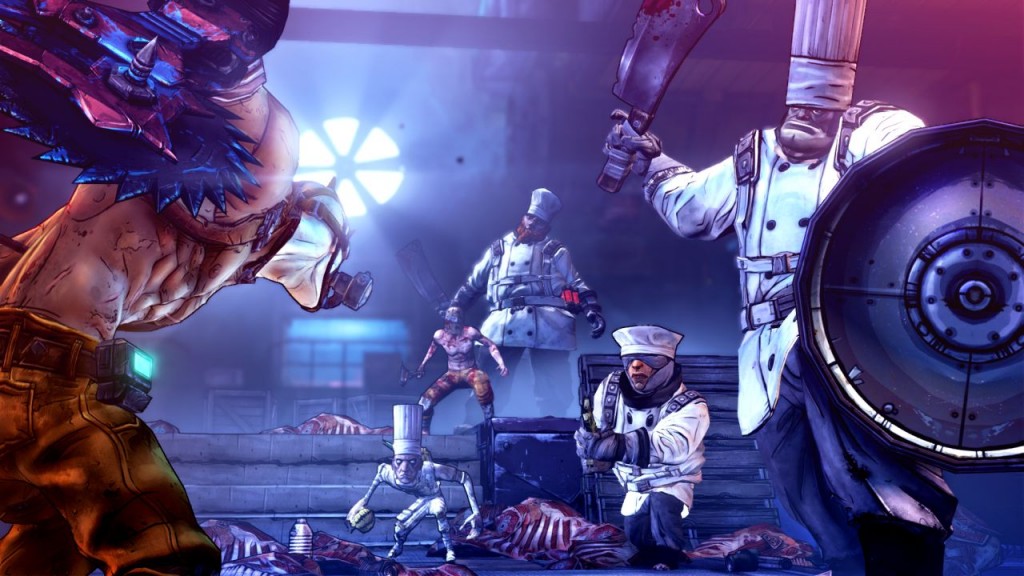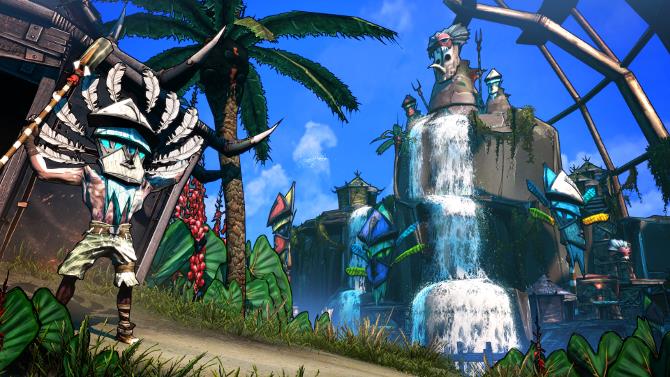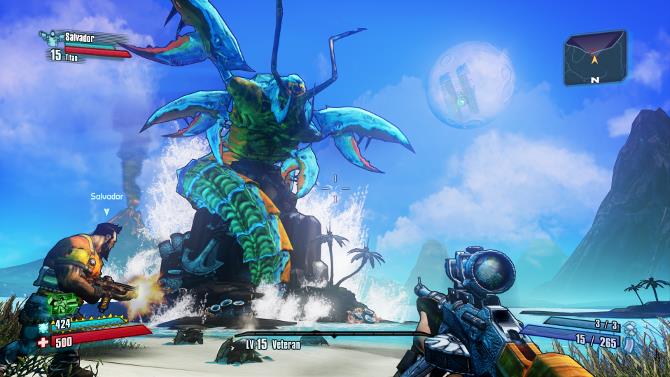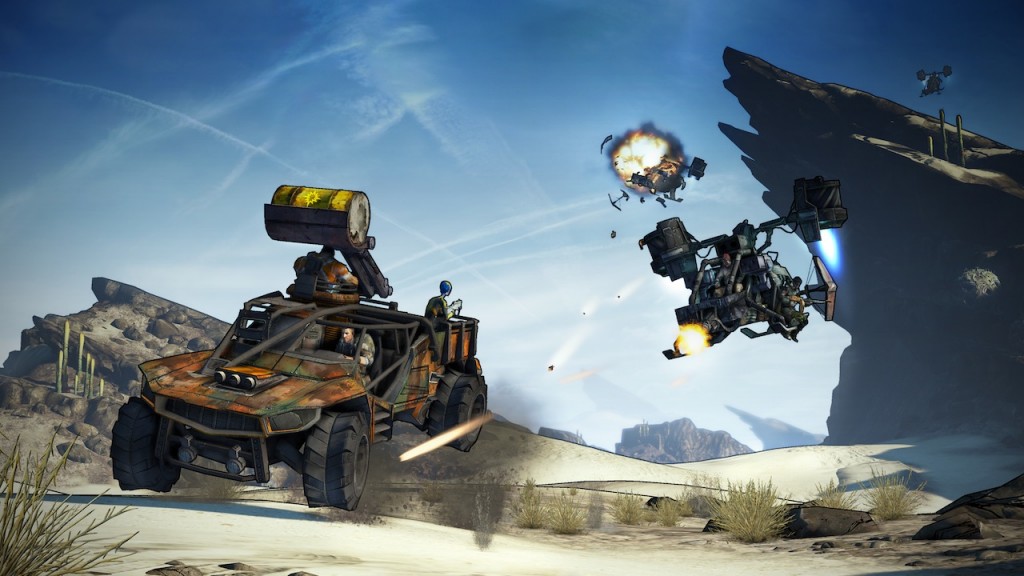Borderlands 2 – A Shooter That’s Still One Hell of a Ride
For anyone who likes first-person shooters in which the action and gameplay seamlessly blend together to present a cohesive experience, the Borderlands franchise is sure to come to mind. It’s a refreshing diversion from the often serious and grim takes on war and conflict that feature in other franchises like Call of Duty, for example, allowing for a more breezy tone although things can and do get dark from time to time.
At its heart, each Borderlands game is about balance. It’s about balancing humor and heart against a subtle analysis of corporate greed and oppression. It’s about balancing excellent shooting with a loot drop system that allows for a lot of creative expression. It’s about balancing the old and the new in ways that make sense in each successive instalment. We could go on and on.
However, Borderlands 2 stands out as a highlight in the franchise’s history, and we would say that it’s one of the most solid experiences that takes everything that made its predecessor special, and dials those elements up to a hundred with aplomb. It’s a game that we would gladly start over given a chance.
But what makes it such a great title in our book? Strap yourselves in and find out.
An Ambitious Sequel
While the story of the first Borderlands game certainly entertained us when we first played it, the sheer scope of its sequel’s narrative made it look like a proof of concept in retrospective comparison.
Taking the premise established in the first game to new heights, Borderlands 2 was quite the rollercoaster, expanding on events in the first game while also bringing in a new set of Vault Hunters into the fold. However, by including the main characters from the first game as NPCs, Gearbox Software cleverly bridged the gap between its games and established a sort of continuity between them that would, well, continue, in Borderlands 3.

The new story was able to sustain the humorous tone of the first game while also bringing a lot of heartfelt moments to the table in a way that was not only organic, but so well-paced and well-written that it had us wondering if the first game was only a prologue to Borderlands 2.
Angel’s introduction and the conclusion to her story continues to give us goosebumps and serves as an example of how Gearbox managed to balance a light and breezy tone with darker moments that were sure to have players on the edge of their seats. You never knew what was coming next in Borderlands 2, and that made it a very special game in out book.
A clever move was setting up the new narrative in the aftermath of events in the first game. It was a clever way of introducing Eridium and Handsome Jack into the mix, while allowing for entirely new Vault Hunters to take up the mantle of protagonists from the old guard.

Doing so allowed Gearbox to increase both the size and scope of Pandora as well as its unique gameplay systems while providing the narrative space to include a slew of new characters who joined the returning cast to make Borderlands 2 a very ambitious tale indeed.
And it was a move that worked well. Handsome Jack’s efforts to secure a new Vault and his subsequent takeover of Pandora was the perfect way to expand on the narrative from the first game. It also allowed Gearbox to get quite creative in other areas of the game, as even the best of main narratives would not excuse a lack of innovation in gameplay mechanics and world building in a franchise that earned its reputation for precisely those reasons.
But Borderlands 2 was able to live up to that challenge.
Pandora 2.0
The game’s expanded story had the added benefit of allowing Gearbox to add a more varied set of biomes for the Vault Hunters to explore. Pandora in Borderlands 2 was more than just a vast desert.
It included lush grasslands, cold and desolate glaciers, murky swamps, and volcanic areas, allowing Gearbox to flaunt a vastly expanded vision for its art style from the first game. It was a benchmark in creative freedom, allowing its artists to let loose their ideas and bring variety to a title that thrived on it in other areas of the experience.
With the results out there for all to see, it’s clear that Pandora’s makeover was one that not only made sense from a narrative standpoint, but was also quite instrumental in making the experience of playing through Borderlands 2 all the more immersive as a result.
It’s a feat that can be quite hard to achieve by any standards in modern gaming, and Gearbox must be commended for its novel approach that encouraged its artists to go nuts with their designs. It’s a move that allowed Borderlands 2 to explode with colors and distinctive visual overtones, making Pandora much more attractive as a destination in the process.
We can’t really blame Handsome Jack for setting up shop there, to be honest.
More Vault Hunters, More Insanity

While a new story and an expanded Pandora were important factors in making Borderlands 2 as appealing to us as it is, they pale in comparison to the way in which its cast continues to occupy a place of fond nostalgia in our minds.
The four new Vault Hunters were the perfect blend of the old and new, bringing fresh new tweaks to the abilities of their predecessors while managing to stand out on their own enough to be compelling protagonists. Zer0 continues to be among our favorite assassins, Edward Kenway and Ezio Auditore notwithstanding.
But where Borderlands 2 really hit the nail on its proverbial head was the clever integration of the previous game’s Vault Hunters into its expanded narrative, allowing the franchise to create a sort of bridge between the old and new in a manner that made sense while fleshing out each of those characters in a way that felt both satisfying and rewarding for its players.

Learning more about the new Vault Hunters by discovering their voice logs was another highlight of the experience, allowing Gearbox to overcome the limitation of them being largely silent protagonists while providing its players with another incentive to try and visit every possible corner of Pandora that they could find.
And that brings us to Handsome Jack. As an antagonist, he not just stole the spotlight away from the rest of the cast, but made it his own. Flitting between nonchalant arrogance and megalomaniacal rage, he continues to be among our most favorite antagonists of all time in modern gaming.
Daemon Clarke’s take on the character is one that is so unique, we almost found ourselves rooting for Jack at several points in the story. Up until Jack’s actions at a crucial point in the game’s narrative changed our opinion of him forever, that is.
And of course, there was Tiny Tina. Ashley Burch’s ability to bring the character to life deserves a special mention especially in the intervening years since she took on the challenge of making Aloy a mainstay in PlayStation’s lineup of frontline characters on its Horizon franchise. It’s not everyday that a character is so good they get their own spinoff title, after all.
Borderline Psychotic

And that brings us to the gameplay. The gameplay loop on offer in Borderlands 2 is yet another example of how Gearbox was able to blend the old and the new, bringing meaningful improvements to what made its first game special in ways that retained the original’s familiarity while its new additions screamed of innovation.
The core experience remained largely the same as the first game, with Borderlands 2 being an excellent looter shooter that allowed its players to utilize each Vault Hunter’s new skills in creative ways either solo or with their buddies in tow. That part didn’t change, and it didn’t have to.
But the new and improved loot system, and the ability to share gear between cooperating players brought a layer of immersion to its collaborative multiplayer shenanigans. Expanding on the procedurally generated loot system of the previous game while adding new weapon manufacturers each of whom brought a quite distinctive style to their weapons was a stroke of genius in many ways.
[embedded content]
For starters, it allowed each player build to feel very unique and distinctive while also allowing for an easier time making those builds thanks to the ability to share loot. Second, it tied in very well with Pandora’s new expanded size and scope, making the planet feel more alive and thriving with life than the first game could hope to manage.
And lastly, it made Borderlands 2’s combat all the more engaging, with players incentivized to take on enemies with the hope of getting their hands on a weapon that truly suited their playstyle or one that they could pass on to that one friend who sorely needed a better tool of destruction.
The expanded loot system had us spending many an entertaining hour collecting weapons and swapping them in and out of our builds. It was an excellent expansion of an already fantastic gameplay mechanic, and will remain a source of fond memories of Borderlands 2 just like everything else in the game.
Intuitive Innovation
Borderlands 2 was a showcase of Gearbox’s ability to gauge the elements of its titles that worked, and its determination to enhance ones that didn’t in order to present a cohesive, inspired experience for its players.
It’s no surprise that the game has achieved the success that it did. While Borderlands 3 was an equally solid game in its own right, it is the second instalment in this evergreen franchise that holds a special place in our hearts. Perhaps Borderlands 4 can change that when it releases later this year? We certainly hope so!
Note: The views expressed in this article are those of the author and do not necessarily represent the views of, and should not be attributed to, GamingBolt as an organization.


Comments are closed.